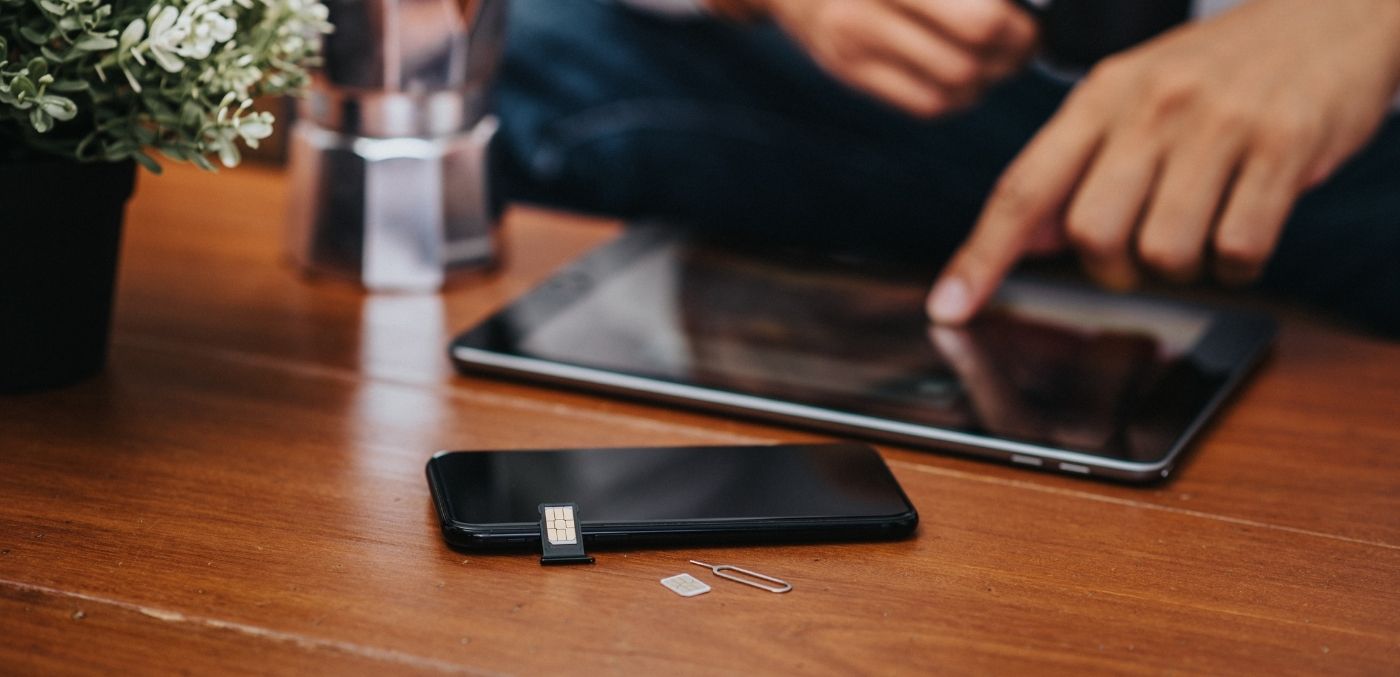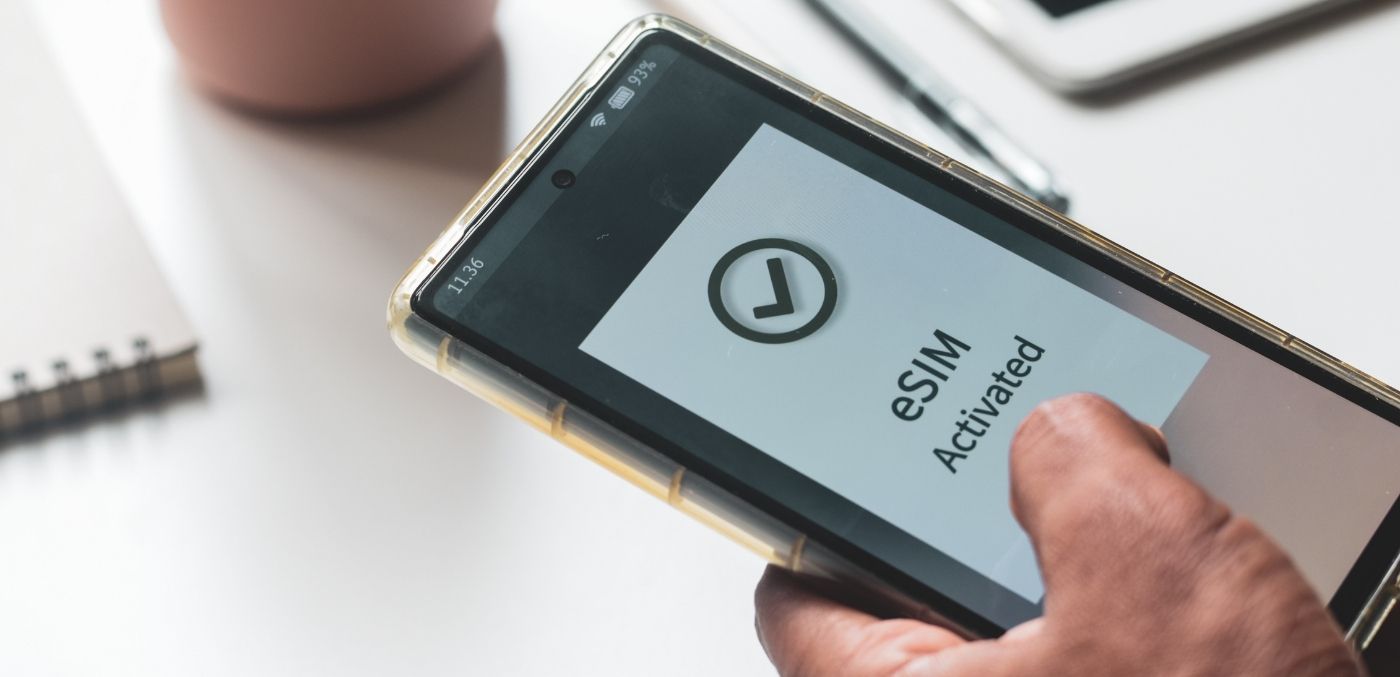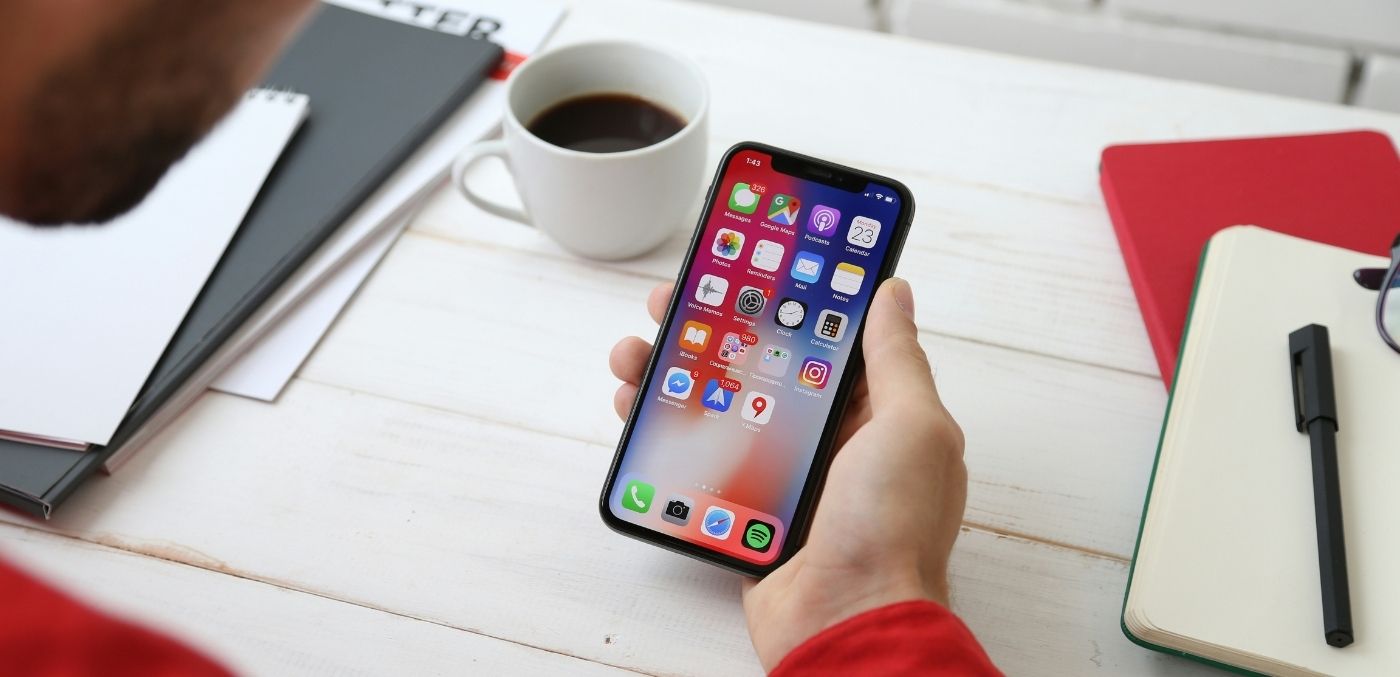What is an eSIM? Easy, convenient and affordable, this new tech will keep you connected wherever you are in the world, writes Laura Barry.
When I embarked upon my first overseas trip 15 years ago, I did so without a thought for my phone. I wasn’t worried about staying connected, phone calls, texts or posting to Instagram. I simply threw my phone into my backpack and used internet cafes or hotel computers to Skype or send updates to my family. Now, with more than a decade’s travel experience and 21 countries under my belt, I couldn’t imagine navigating a new city or public transport system without the aid of Google Maps. Up until recently, SIM cards kept me connected. Today, eSIMs offer an easier, more convenient and affordable way to get set up with an overseas provider before boarding my flight. So, what is an eSIM? And should you be travelling with one?
What is an eSIM?
An eSIM (short for embedded SIM) is a digital version of the traditional SIM card we’re all accustomed to. It’s a tiny chip inside your phone that holds all the information your mobile provider needs to supply a telecommunication service. Instead of inserting a small piece of plastic into your phone, the eSIM is built directly into your device and can programmed remotely over and over again. It works exa same way as a physical SIM, connecting you to a mobile network, storing your subscriber details, and allowing calls, texts and mobile data, but without a physical card. eSIMs were first introduced in 2017 in Google Pixel phones. The technology then appeared in iPhones a year later, and rolled out across Samsung Galaxy models in 2020.

How does an eSIM work?
Instead of inserting a SIM card into your phone via a SIM card slot, you activate an eSIM by downloading a profile. Your mobile carrier will either provide you with a link, QR code or send the configuration digitally. Once activated, your phone connects to the mobile network just like it would with a traditional SIM card. This process is quick, easy and can usually be done in minutes without requiring you to step foot in a store.
How to use an eSIM
Most smartphones now support both a physical SIM and an eSIM, allowing you to use two phone numbers on one device. This is perfect for keeping work and personal lines separate, or for travelling overseas and picking up a local data plan without losing access to your home number. Most modern smart devices have eSIM capabilities, including iPhone, Google Pixel and Samsung Galaxy phones, plus tablets, smartwatches, cars and drones. However, not all devices are compatible, so check first.

Should I use an eSIM for travelling?
You can use an eSIM for your everyday phone number, or you can use an eSIM when travelling abroad. With multi-country coverage, eSIMs are perfect for international travel, keeping you connected across borders without swapping SIMs. You can keep your regular number, use dual lines, and never worry about losing a tiny plastic card again. eSIMs are also cheaper than roaming or pocket WiFi, and available in both prepaid and postpaid plans. It is the quickest and easiest solution for remaining connected while travelling overseas, and you can even purchase your eSIM and activate it before you leave home for the airport.
Many travellers use eSIMs for data-only plans, which allow you to receive calls and texts on your physical SIM (such as your usual mobile number), while your eSIM handles mobile data (that you can use abroad). Some eSIM providers also include a phone number, but it depends on the service. If you’re a regular user of apps such as Messenger, Whatsapp, iMessage, FaceTime or WeChat, data is more than enough to keep you connected with family and friends throughout your holiday. Using an eSIM is typically much cheaper than an Australian telecommunication provider’s international roaming charges, and it is much easier than purchasing a new SIM card at the airport or a convenience store upon your arrival at each destination.
How to check if your device is eSIM compatible
To check if your device is eSIM compatible, go to Settings > Mobile/Cellular > Add eSIM or Add Mobile Plan. If you see an option to add an eSIM or scan a QR code, your device supports eSIM. You can also check your phone model on the manufacturer’s website or your carrier’s eSIM compatibility list.

What are the benefits of using an eSIM?
- Convenience: No need to visit a store or wait for a SIM card to arrive.
- Flexibility: Switch between carriers or plans with just a few taps.
- Travel-Friendly: Avoid roaming fees by using a local eSIM while overseas.
- Multiple numbers: Use multiple lines on one device with ease.
What are the disadvantages of an eSIM?
There are a few disadvantages to using an eSIM. Not all devices support eSIM technology and switching between phones isn’t as simple as moving a physical SIM. It often requires deactivation, reactivation and sometimes help from your carrier. Some providers may have limited eSIM support or impose restrictions, and activation usually needs a stable internet connection. Because eSIMs rely on your phone’s operating system, software bugs or updates can occasionally cause connectivity issues (though this is rare). However, when it comes to security, eSIMs are just as safe as physical SIM cards, if not safer. They can’t be removed or tampered with easily and can be remotely disabled if your device is lost or stolen.

Is it better to have a SIM card or an eSIM?
Overall, eSIMs are the better option for most users. They offer greater convenience, make switching networks easier, support dual SIM use on one device, and help reduce plastic waste, making them more environmentally friendly. While both eSIMs and physical SIMs carry similar security risks, the added flexibility and reduced environmental impact give eSIMs the edge.
Does an eSIM give you a phone number?
Depending on the type of plan you purchase, an eSIM can provide with with data only, or a new phone number too.
Which is the best eSIM for international travel?
Many companies provide eSIM services. You can compare products on Klook, Saily, Airalo, Holafly, Nomad, Simify, Flight Centre, Vodaphone, Ubigi – the list is seemingly endless. Be sure to compare the cost per GB of data, the duration of coverage, if your destination is covered, and whether or not you require a new phone number, phone calls or texts when choosing an eSIM provider.
Read more:
Luxury travel accessories for sartorial jetsetters
Are Ray-Ban Meta AI Glasses the new travel essential?
How to earn Qantas points without flying
This article is a Signature Luxury Travel & Style digital exclusive. Be the first to see more exclusive online content by subscribing to the enewsletter below.











